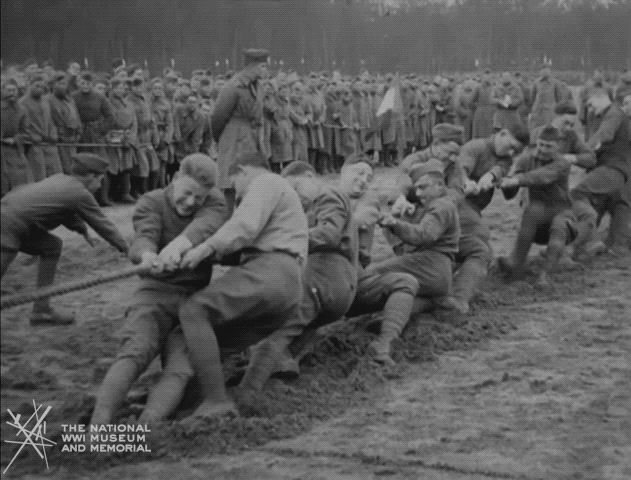
Hello there.
This is the sample page to my 10,000+ word guide on everything products and how to get them. If the taste is so good you want the full meal? You can order that right here.
It is a living document that gets updated as the market changes.
Otherwise, read on! The world of products is getting wild and it's only going to get crazier.
How to source products like it's your damn job.
Welcome.
This is a no bullshit guide to sourcing products.
How to find, vet, and engage suppliers and factories and get your products made and delivered.
After we're done you'll be ready to source products like it's your damn job.
Let's get started.
Read this first.

I don't know why you bought this guide.
Ok, obviously I know why.
You want to get products. Fast, cheap, and great quality.
Maybe you're looking to start a side gig, you could have a successful Shopify brand, could be running a big Amazon FBA company.
You could have been using places like Alibaba before or maybe you've never ordered anything and want to do your homework before you take the plunge.
Whatever the reason, you're serious about it.
Good.
With that in mind, let's get right down to it.
The world of sourcing and production (finding products and making them) is full of jargon and shorthand. Some of it is just industry talk, some of it is very important to know and can mean wasted money if you don't.
So I wrote this guide to focus on what's important.
I trimmed all of the fat and none of the flavor.
It will teach you how to find what you're looking for and get what you want without getting burned or paying costly mistakes.
It is written with the intent to save you an insane amount of time and produce the juiciest results. All lessons I've learned from making products sold in big name big box stores, glitzy boutiques, and ecom platforms. I've toured factories around the world and hit the big trade shows.
Not only have I seen how the sausage is made, I've been in it up to my elbows. I usually don't like swinging d*ck, but if you're anything like me, you want to know who you're listening to.
So, if you'll indulge me a moment, I'll tell you why to listen up:
• I run a six-figure sourcing and production business called SB&P that works with brands all over the globe from startups to Fortune 500s helping them make the best damn products their customers can handle.
• SB&P has offices in NYC, LA, and China so we're in the thick of it from product idea, factory production, to delivery. We work the entire supply chain from snout to tail.
• I attend the best trade shows around the world that include ASD Market Week in the US, Cosmoprof in Italy, and the Canton Fair in China. Trends that go into big retail appear here first, keeping our finger on the pulse and ahead of the market curve.
Ok. That should give you an idea of my work. I am not trying to brag but in this day and age you have to from time to time.
With that out of the way, the lessons detailed here cover material in about 5 to 10 minute stretches. Some of you have home offices, others may have to read on your commute to work.
The lessons are short, punchy, and concise for a reason -
this is to give you serious fucking chops at sourcing product.
It's not here for moving prose or to make you laugh (though we might have a few along the way).
Also, it is broken into digestible sections for another reason. I wanted it to be easy to add updates to it. If recent events have taught anyone anything it should be that you better be ready to adapt to the entire world changing.
This isn't a one time read, but a resource that you can continue to look back on when building your brand's product line.
I'm going to make this damned simple so that by the time you're done you will know exactly how to start making the best damn products your customers can handle.
The rest? You're obviously a go-getter, you've got some grit.
You'll figure it out.
Enough jawing.
Let's learn how to source product like it's your damn job.
P.S.
If at any point through this you say fuck it and decide you want to drop the dough for someone to come in and do the heavy lifting?
.•.
*You're now reading a sample of my guide focusing on 2022*
Coming in hot from 2021.

Holy shit what a year.
By now your brand is either dead, dying, or bringing in money like it beat up a leprechaun.
If it died, maybe you didn't get here quick enough, lets see if we can raise it from the ashes. For the rest of you, I am going to take the lessons and winning moves we played for our clients and boil it down to fit this format we have going.
You'll need to take this to heart because, despite what all the politicians say otherwise, 2022 ain't getting better any time soon and we actually have to earn a living.
So without further ado, we're adding bonus content to get ready for next year. Everything in the above guide still applies, in fact, it's more important than ever, but I am going to add some points that everyone can apply to their brand.
Start your product development yesterday and don't stop.
We're going to get the big one out of the way. The most over looked part of every brand line.
Your product development process. I've changed businesses with this one lesson.
I've put clients' kids through college on this, so listen up.
Most brands think of making money something like this

This is typically what most people in a company think about when it comes to their brand.
If you have a specialized job, maybe buyer or logistics specialist (or read my How to source products like it is your damn job guide) it might look something more like this:

This is getting better. This is what the majority of profitable businesses knew before the global lockdowns and logistics crisis.
That is why many of them are out of business now.
When their normal factory couldn't meet their needs, many reasons we won't go into here, they were screwed.
They did not have back ups and most didn't know the first thing about finding one.
Those that did had a weak system, weak product development and sourcing.
So they did not stand out or were not fast enough to beat out the stronger companies.
It is not as simple as emailing some designs and wiring some funds.
Especially now.
You need something like this

This isn't just a timeline of how a product is made, it is the playbook of what you need to be doing.
You need to be dedicating work day hours to thinking about your brand, it's new products, and how to get them ASAP.
What a load of ships.

Ok, I'll admit I couldn't think of a good ship pun and settled.
Listen, here's the bad news: You can't do anything to clear the ports.
They will not be unclogged any time soon.
What you can do is make getting there like greased lightning.
Let me break down what is going on over there.
So the shipping containers, and space in them, are sold to get on a ship.
The prices of those containers have skyrocketed during this thing.
They change prices every day.
Up. Down.
It's like a fish market.
Now what most suppliers are doing is quoting you a price that includes this.
They don't want to come to you on the day of shipping and tell you they need more money and they do not want to cut into their profits.
So they wait for the price to drop. This may take some time.
I have seen someone wait two months in port to get loaded onto a boat.
How much would a two month delay cost you?
Just to get loaded!
So here's what you need to do ASAP.
Get in contact with your supplier if they handle delivery or your freight forwarder.
Discuss with them their policy on this and work out a plan that fits your needs.
I have seen some companies take this on by individual order even.
Working out which items and shipments simply cannot wait and budget out extra funds just in case they need to get things loaded.
Some shipments are not as crucial and can afford to wait around for cheaper shipping.
Now more than ever you need to be able to time your shipments as accurately as possible.
So reach out to the people moving your goods and discuss.
Burdens shared.

It is time to better secure our suppliers.
It is about to be 2022 and even people with long relationships are getting dropped on account of China energy saving laws, high order volumes take capacity, and a general ass kicking the the shipping sector has taken.
Obviously the best way is to make bigger orders more often (so sell more).
But that is outside the scope of this sourcing guide and may take time, so what can you start doing right now?
You can have your supplier do your work. I don't mean hire them.
I mean have them share your burdens.
You won't present it like that and if you do it right they won't see it that way, but that will be one of the benefits for you.
The others could mean preferential treatment, access to new stuff first, cheaper pricing, and just an overall more solid relationship with your supplier that will begin to be closer to a partnership than a simple transaction process.
As always, you'll be using the following as a template.
Build, break, build.
Start out small using this build, break, build routine.
Something good they did, something you want changed or better, ask for directed but open ended options.
Example: "The new sock designs look great, they are selling very well. We're currently planning the details of placing a new order of them with you. We have an issue though, the packaging isn't as secure and sometimes the socks fall out. We don't want our customers to think they're cheap. Do you have any ideas or options we can do to fix this and keep the cost the same?"
There is a deceptive amount of information included in that short email. It is all designed to start turn the dynamic from
A) You doing all the work to design your product, then paying the supplier to execute.
to
B) Leveraging your supplier's industry knowledge and capabilities to inform you on how to improve your product.
This also starts to establish a relationship where you establish a few reasons for them to want to help you.
One, you're planning future orders, they want that.
Two, you politely cast doubt on their service to you with a problem in the item, they'll want you to be happy with the work.
Let's make this a regular thing.
Now we're going to take this blossoming relationship to the next level. Before you were involving them in one aspect of an item or something similarly small.
Now we're going to set a regular check in time. This will depend on the frequency of your orders, the variety of product they are making for you, and so on.
You don't want to come off as a needy weirdo or spam them with useless platitudes.
So instead you'll always attach it to a matter of business you could be speaking to them about anyway. Imagine them as a different department in your business instead of a separate entity.
This may be before a big order, every quarter, when starting a new entry into seasonal items, you get the idea.
But you want to do this before you are setting orders for these.
Example: In the middle of summer you'll want to check in with them about your plans for Q4/Christmas and let them help you craft your strategy.
"Hey we were in the planning stages of our Christmas sock variants we will order from you for later this year. Do you have any suggestions of popular patterns you could do for us or any new items you've recently developed?
We're also looking to add a couple of holiday variants to our normal ankle socks, how many can we add without increasing our price or usual order size?"
Let them help you build and guide your order details.
You don't have to follow everything they say, but by including them in these orders and building a collaboration, you have them invest in your success.
This drastically lowers the likelihood it'll be you that gets cut when the factory starts reaching capacity.